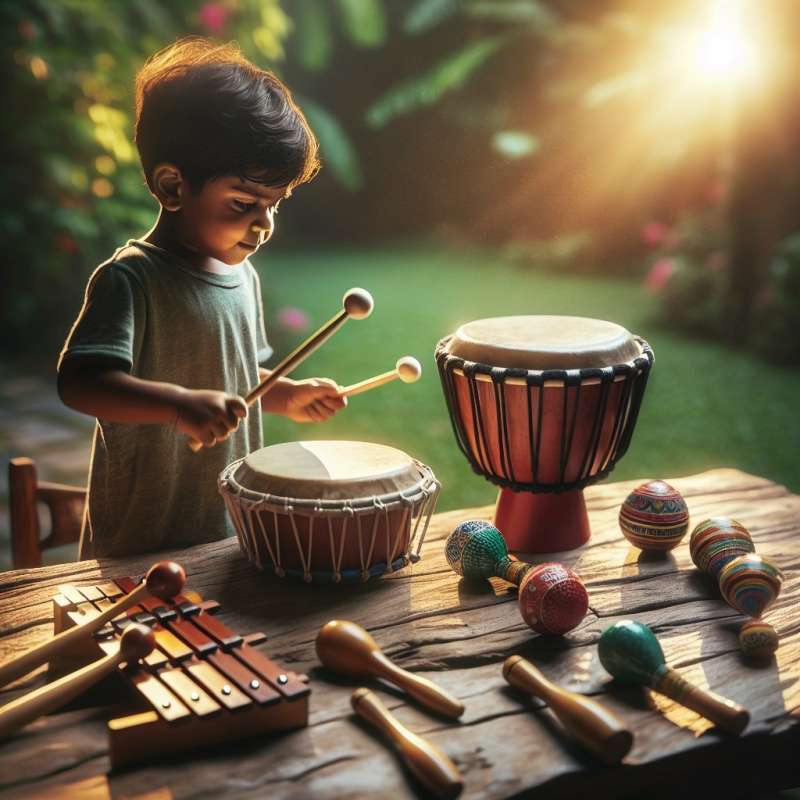
Defining Percussion Instruments
Percussion instruments produce sound when struck, shaken, or scraped. They're the oldest musical instruments, with roots in prehistoric times. They often dictate rhythm and can use membranes, metal, or wood to create diverse tones.
Africa: Djembe Rhythms
Originating from West Africa, the djembe is a goblet-shaped drum played with bare hands. Traditionally carved from a single wood piece and headed with goatskin, it's integral for ceremonies and reflects community life.
Asia: The Versatile Tabla
The tabla, a pair of drums from the Indian subcontinent, is renowned for its complex rhythms and melodic potential. Used in classical, popular, and religious music, it's a staple in Hindustani classical music.
Latin America: Cajón Surprises
The cajón is a box-shaped percussion instrument from Peru, surprisingly introduced by African slaves. Played by slapping the front face, it's now pivotal in flamenco and Afro-Peruvian music.
Europe: Celesta's Celestial Notes
The celesta, invented in 1886, produces heavenly sounds with a keyboard and struck metal plates. It's a unique blend of percussion and melody, famously heard in Tchaikovsky's 'Dance of the Sugar Plum Fairy'.
Middle East: Doumbek's Belly Dance
The doumbek, also known as darbuka, is a chalice drum made of ceramic or metal with a fish or goat skin head, widely used in belly dance performances and Middle Eastern music.
Oceania: Slit Drums' Deep Roots
Pacific cultures use slit drums, hollowed-out logs with a slit that resonates when struck. These drums have been signaling devices, ceremonial instruments, and even a form of long-distance communication across islands.
What defines percussion instruments?
Instruments using strings
Sound by striking, shaking
Wind flow for sound
Company